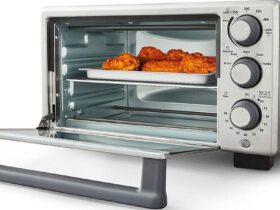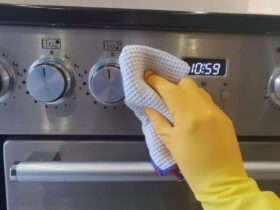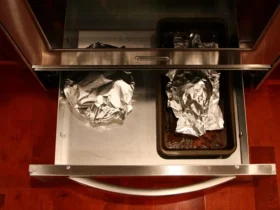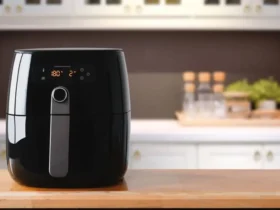Let’s be honest. Being home chefs, we all love to cook delicious meals in our ovens. But we all hate to clean them.
Even though there are several oven tray cleaning hacks, removing the elbow grease is still a difficult task.
Luckily, now there are several self-cleaning ovens available to help you out. But are they reliable? And how do they work?
Self-cleaning ovens clean burnt food debris and grease by making steam or high heat. Heat and steam loosen up the stubborn grease. Once you start the process, the temperature rises up to 800 degrees Fahrenheit.
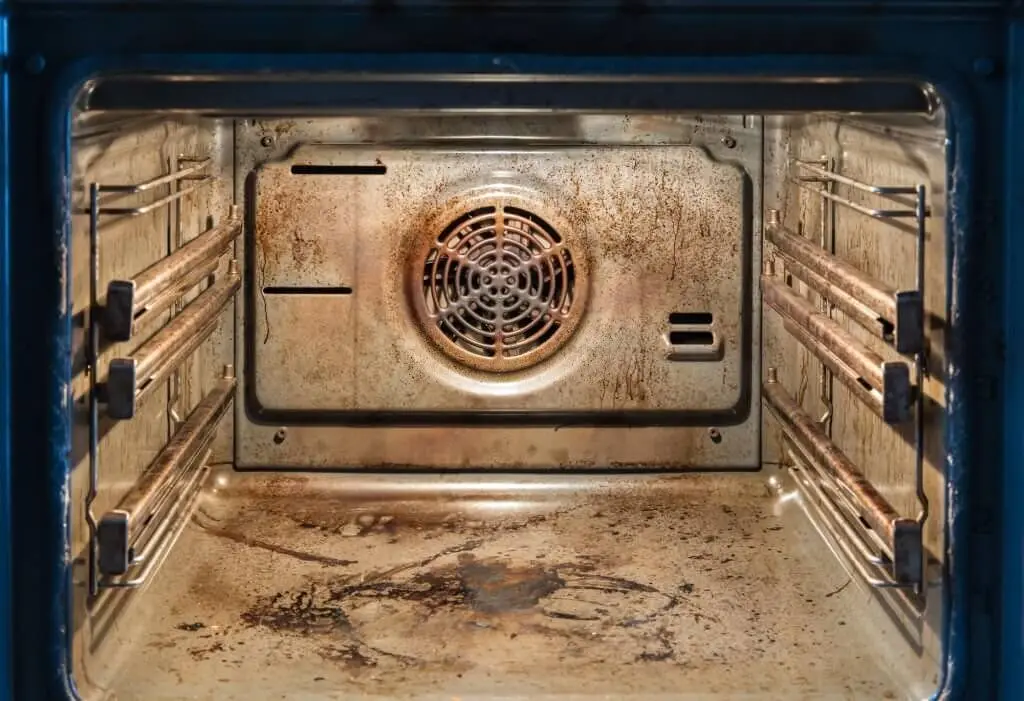
After your oven has been cleaned and cooled down properly, it automatically unlocks the doors.
There is quite a buzz among Brits about them. So, we decided to test and review how a self-cleaning oven actually works.
Are Self-Cleaning Ovens Safe?
Yes, self-cleaning ovens are completely safe. Keep in mind, before you start the cycle, to remove every plastic piece from the interior.
It is normal for ovens to make smoke and a burnt smell. The built-up grease can also cause fire due to extreme temperatures while cleaning.
How To Clean A Self-Cleaning Oven?
Before you press the settings for auto-clean, there are a few things you must ensure.
Here’s how to use it with safety assurance
- Pick all the visible food and wipe the grease with a damp cloth.
- It is best to remove racks if they are made of glass.
- Turn on your house venting system to avoid any false fire/smoke alarms.
- Shut your oven door safely.
- Start the auto-clean process.
- Let your oven cool down before opening the door.
- Then, wipe all burnt dust and leftover debris with a wet cloth.
Most ovens have a built-in feature that only opens the door once it cools down. But, if your appliance doesn’t have this function, then we strongly recommend you not to open it after one hour.
How Do Self-Cleaning Ovens Work?
Usually, such ovens work in three ways. But, each process involves high temperature and steam.
- Catalytic
- Pyrolytic
- High Steam
Mostly, manufacturers use one way in their appliances. But, each method ensures removing 100% burnt marks and elbow grease.
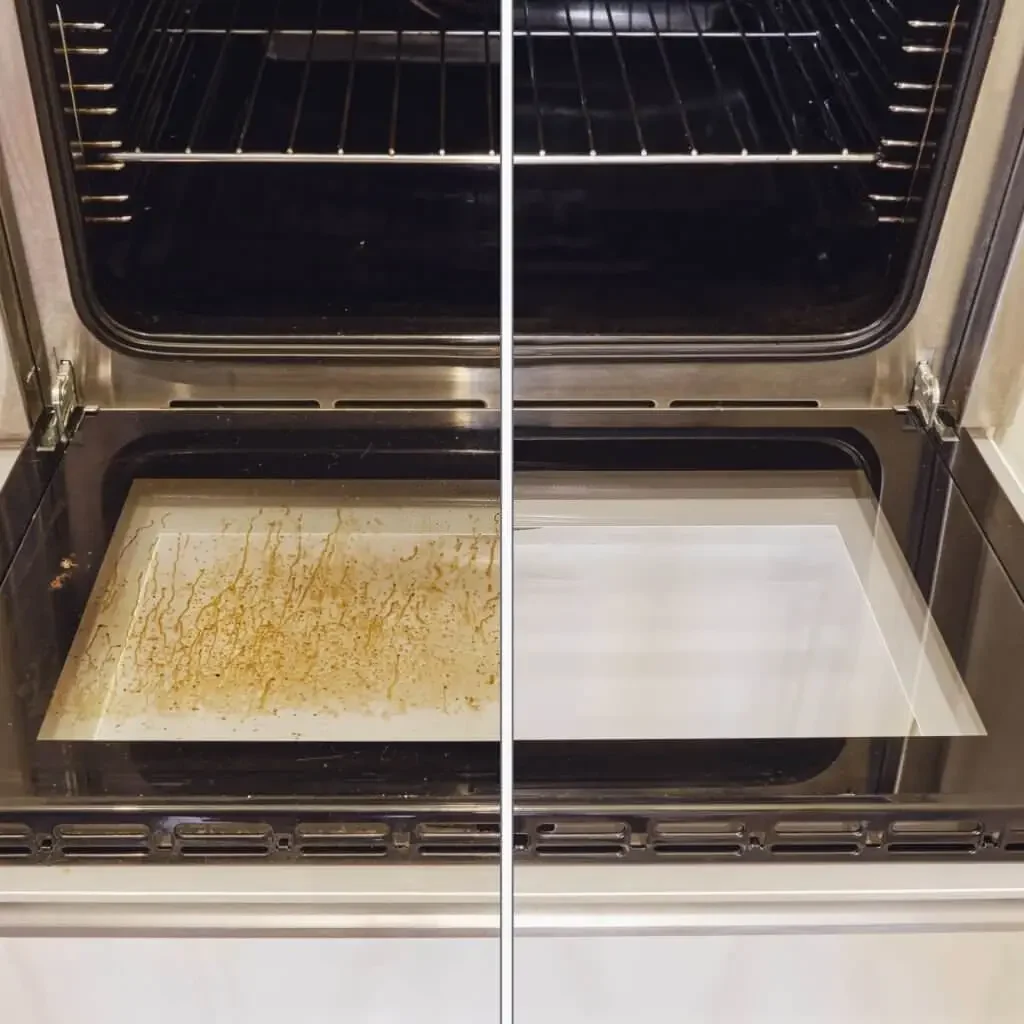
3 Common Methods In Detail
For a better understanding, let’s have a detailed look at every elf cleaning method in detail.
1. Catalytic Cleaning Ovens
These types of self cleaning ovens have a catalytic liner on the walls. While you bake anything in it, the catalytic liner absorbs all the oil and grease particles.
Then, after you’re done and start the cycle. It turns all the absorbed particles into dust by oxidising.
The only problem with this feature is you have to collect all the burnt dust. In the end, you still need to wipe the surface afterward with a wet cloth.
2. Pyrolytic Cleaning Ovens
Most self cleaning ovens have this feature installed in them. Such appliances work by raising the temperature up to 1000 degrees Fahrenheit.
Once all the grime and debris loosened up, it turned into dust. Eventually, you need to clean the base by yourself.
The key feature is the oven auto-locks itself while doing the cleaning procedure. Once it cools down, it unlocks the doors.
3. Steam Cleaning Ovens
This feature mostly comes with eye level grill gas cookers and electric ovens. You need to add water to the bottom.
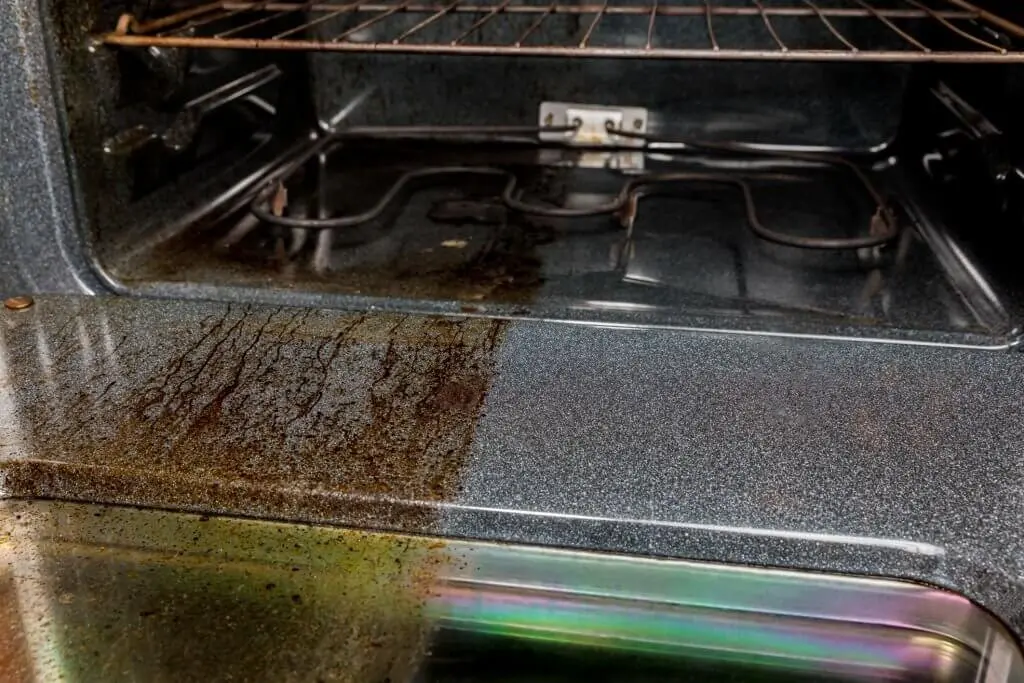
The water at the bottom will make steam and loose burnt food particles. The heat will evaporate the water and create moisture.
Overall, the best thing is this method is suitable for most available range hoods, grills and ovens.
Self Cleaning Oven Temperature
Such ovens can reach extremely high temperatures within 15 to 20 minutes. While running the self cleaning cycle, it can reach up to 1000°F (537°C).
Do Self Cleaning Ovens Use A Lot Of Electricity?
The energy cap in the UK is soaring right now. Currently, the cost of running an electric oven per hour is 40p per hour.
But self cleaning ovens are a bit more expensive. Such appliances require around 2kWh – 2.2kWh energy. So, usually, they cost £1 per hour while running the process.
Self Cleaning Oven Symbol – How You Can Identify Them?
Every self cleaning oven comes with a symbol. So, while buying, you can identify them easily.
The most common symbol is “a series of black dots or diamonds of decreasing size from top to bottom with a square around.”
Mostly, there are 9 dots with 3 dots in each line. Furthermore, you can easily recognise pyrolytic ovens as they have three sets of three arrows or P written on them.
How Long Is A Self Cleaning Oven Cycle?
The cycle is usually 40 minutes long. It actually depends on the size of your oven.
Mostly, built-in double ovens with pyrolytic cleaning run a 60 minutes cycle. But, in general, due to steam and high temperatures, all dirt enamel from the interior within 30 minutes.
Do You Need To Add Cleaners In A Self-Cleaning Oven?
No, you should never add any cleaner to the self cleaning oven. Adding the cleaner to the base will eventually damage the heating element. So, it is best to avoid cleaners or detergents.
7 Self Cleaning Oven Instructions To Keep In Mind
To get the most benefits out of your appliance, follow the below-listed tips and hacks.
- Remove all pans and visible food particles before you start the cleaning cycle.
- Wiping grease with a dry paper towel is best to prevent excessive smoke and fire eruption.
- Never forcefully open the door of the oven while the cycle is still running.
- Always double-check the door lock, even if your appliance comes with an auto-lock feature.
- Don’t put any cleaning agent into your oven.
- Once the process is done, give your oven the proper time to cool down.
- Ensure to wipe all burned food dust every time with a wet cloth.
Self-Cleaning Ovens Dangers – Be Aware Of Them
Unfortunately, a self-cleaning oven is not one answer to all your oven-cleaning solutions. Also, there are some pyrolytic oven problems that you might face.
Here’re some of the common dangers that you should keep in mind before you use them.
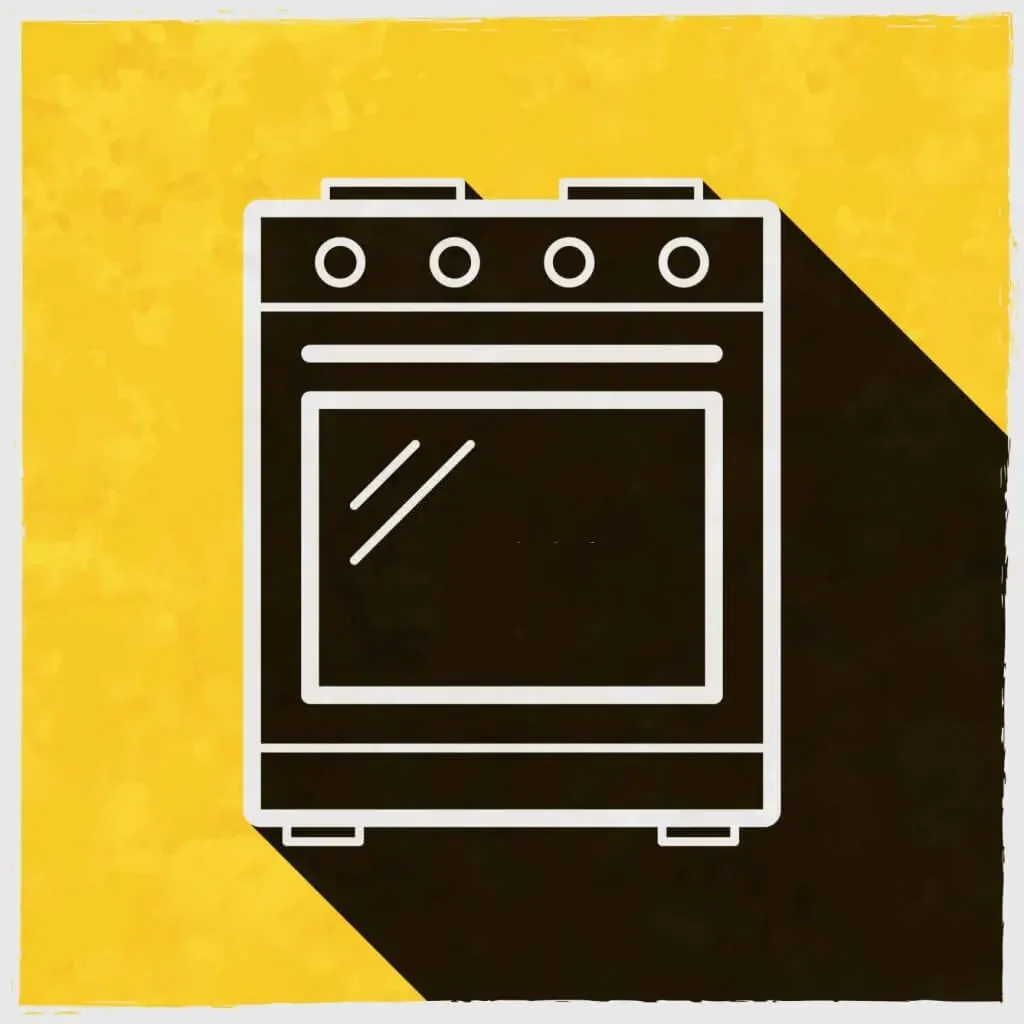
1. Fumes And Unpleasant Smell
As mentioned earlier, while self-cleaning, the temperature rises to extreme levels. So, you may notice unpleasant burning smells.
Such fumes can ruin the atmosphere and your elegant kitchen wall decor. Even though with the working extractor fan, you can clearly notice the smoke.
Such fumes are very dangerous for persons with breathing problems.
2. Threat Of Fire
There is a 100% chance of leftover grease in the oven will catch fire. All the debris turns into dust due to heat.
As per user review and my research, there is a kind of blast in the oven when the fire starts. This powerful blast (limited) can crack the glass door of your appliance.
In the worst-case scenario, you may end with a circuit breakdown or socket fire eruption.
Can You Use a Self Cleaning Oven Without Self Clean Feature?
Yes, you can use self cleaning ovens without the auto clean feature. It is mandatory to use this feature after every baking. You can use any cleaner, soapy water or vinegar for cleaning oven to remove stains from the walls and base.
How To Clean Self Cleaning Oven Manually?
If you want to clean your auto-cleaning oven by yourself, you need several cleaning agents.
You can use baking soda, lemons, vinegar and soapy water to clean it. Here’s how to do it.
- Make a thick paste by mixing lemon juice with baking soda.
- Apply a thin layer to the dirty walls and base.
- Let it settle and wait for thirty minutes.
- Then, scrub the dirty surface with an old brush or a soft sponge.
- Wipe the surface with warm water afterwards.
It is best to avoid soapy water or other cleaning residues, as you may experience a soapy smell after every use due to it.
How To Clean A Self-Cleaning Oven Glass Door?
Most people neglect glass doors during the oven cleaning process. Over time they become sticky and mussy. You can make them look brand new by applying the baking soda paste.
- Mix warm water with baking soda and make a thick paste.
- Apply it to every visible part of the door.
- Let it rest for several minutes.
- Then, wipe it with a paper towel.
It is best not to scrub the glass door. Its surface is very delicate, and if you apply a little pressure on it, you could shatter the door.
You can also use Kitchen Magician secret hack. Boil a pot full of water and place it into the oven. Then, close the door and let the steam do its work. After 10 minutes, wipe the door with a soft sponge.
Are Self-Cleaning Ovens Worth It?
Based on our research and testing, we can safely conclude that self cleaning ovens are not very necessary. Eventually, you can clean the oven once a month, and it will be fine.
But in the case of auto-cleaning ovens, they are expensive to buy, and the running cost is also high.
Lastly, they make a lot of fumes and smoke, which is a hazard for kids and pets. Furthermore, there is always a threat of fire due to extreme temperatures.
So, we recommend you not invest in them. As it would not be a sane decision to put safety at stake just not to clean your oven manually.
Using Self Cleaning Ovens FAQs
Can I leave the house while my oven self-cleans?
No, you must stay home while your oven runs the auto-clean cycle. Mostly, these ovens make smoke and heat. So, it is best to stay home during the process.
How to stop self cleaning oven?
If you want the self-cleaning process at any moment, all you need to do is press and hold the “stop” button for three seconds.
If your oven has knobs, then you need to move the dial toward 0 minutes.
Can you use an oven cleaner on a self cleaning oven?
Yes, you can use cleaners in a self cleaning oven. But it is best to avoid them. Because the heavy chemicals leave a strange smell that gets absorbed into your next dish.
How to use a self cleaning oven?
Ensure that there is no excessive grease and oil. Remove any plastic or wood pieces. Then, close the door tightly and run the self cleaning process.
Once it’s done, take a paper towel and remove the remaining dust and leftover oil stains.
How to clean a self cleaning oven without using the self cleaning feature?
If you don’t want to use the auto clean feature, then it is best to clean your oven with baking soda paste. Make a thick paste by mixing it with water or vinegar.
Then, apply it to the interior and wait for 30 minutes before you clean it with a damp cloth.
Wrapping It Up!
Self-cleaning ovens may save you from all the hard work, but this luxury comes at a high price tag.
They release fumes into your kitchen space and make a lot of thick smoke while doing the process.
Initially, the oil and food debris turn into ash by creating a fire with high heat. This is also dangerous for your electric appliance’s wiring.
Eventually, this is not a one-step solution for you. Because, in the end, you still have to collect all the burnt ash by hand. So, there is no point in relying on them.
We hope that our detailed guide helps you to clear your concerns. Well, in the meantime, keep on doing what you love the most.

